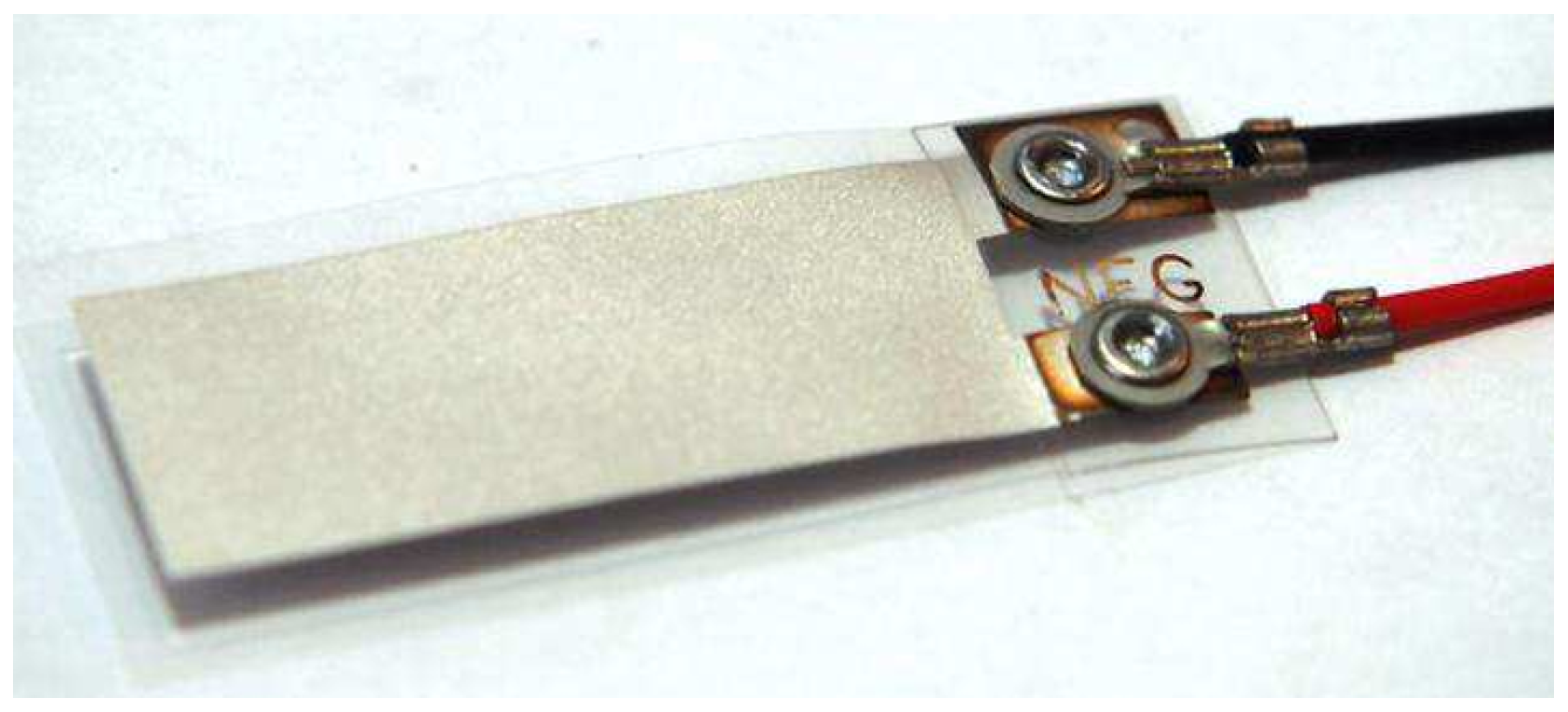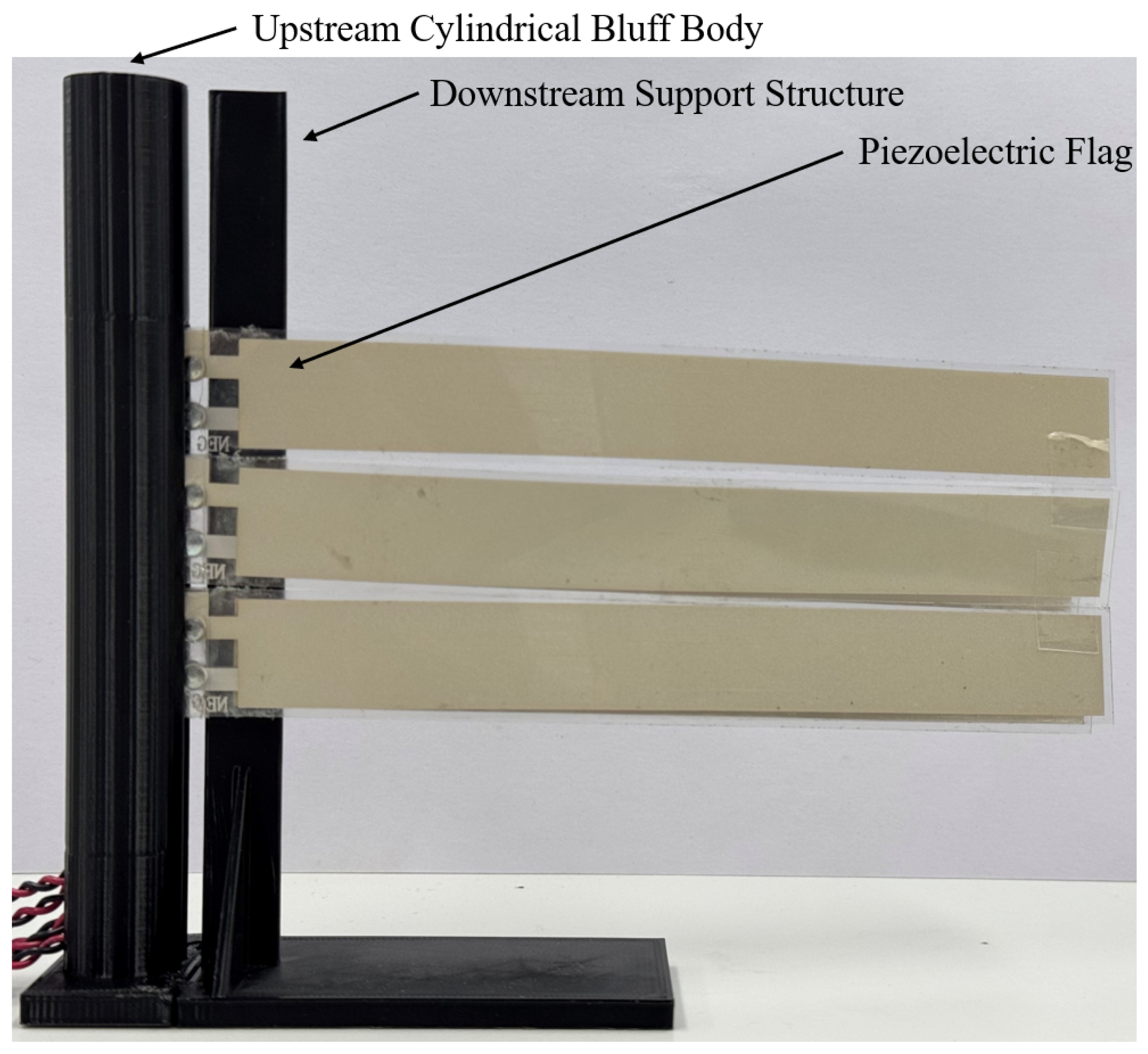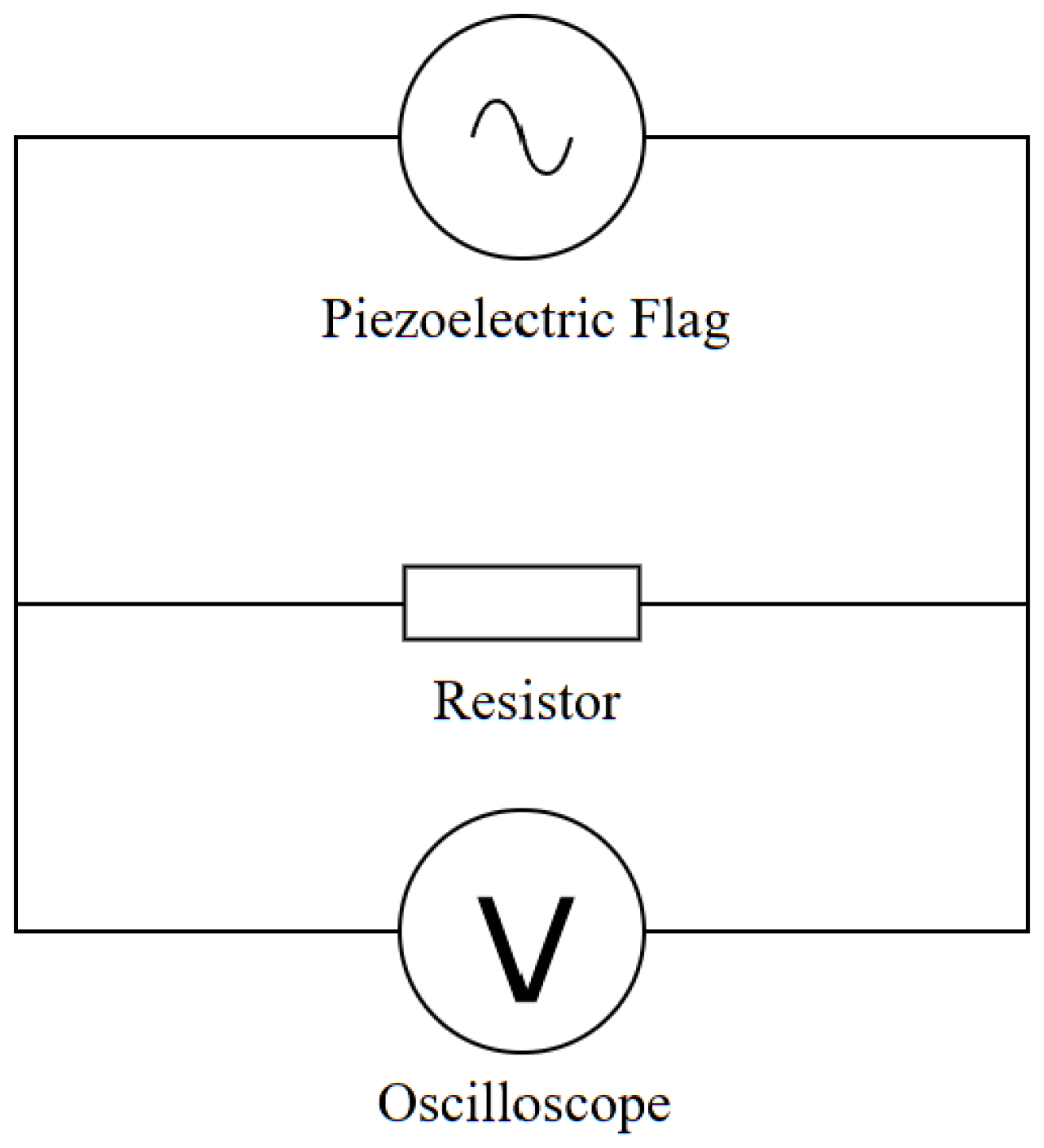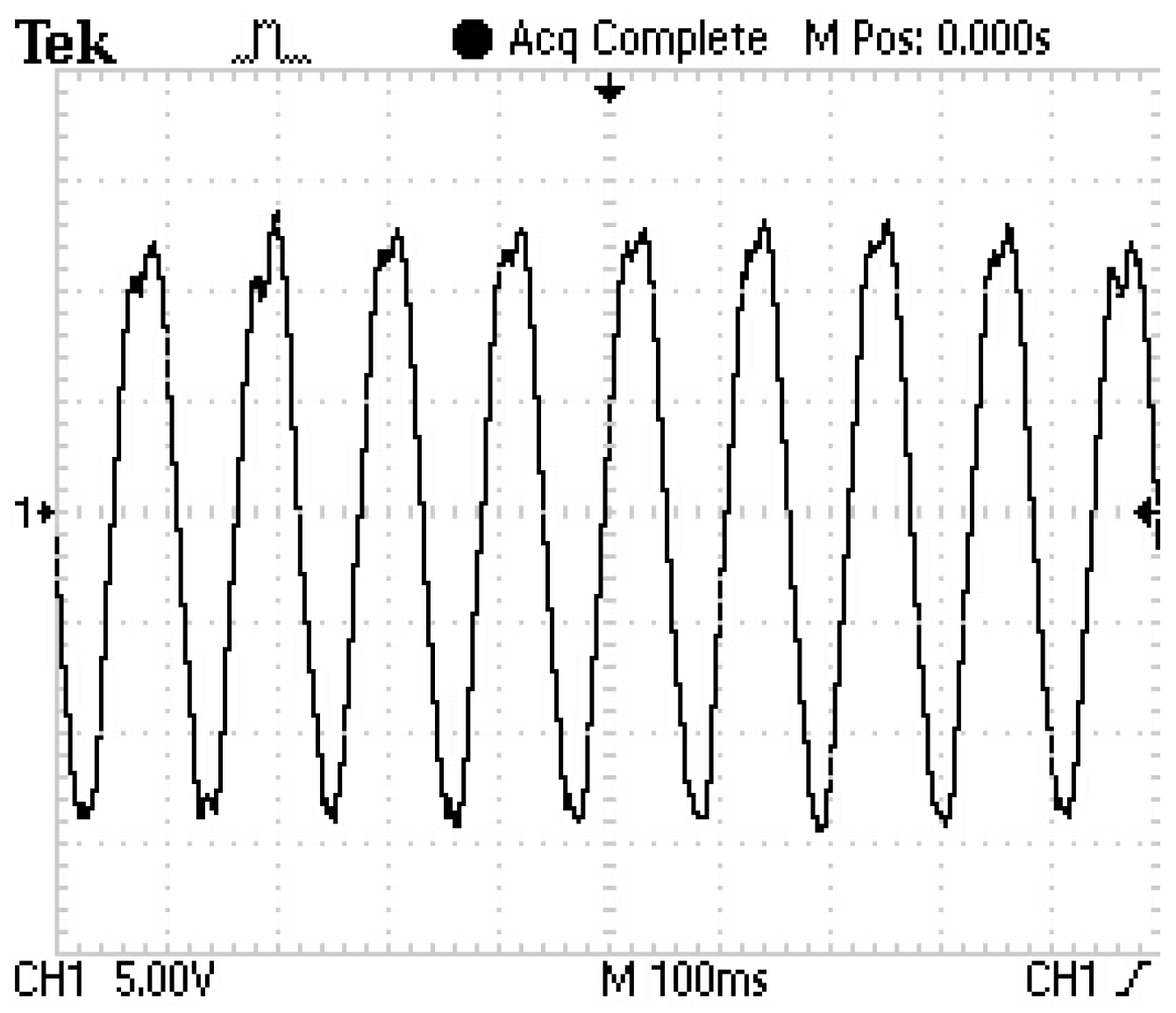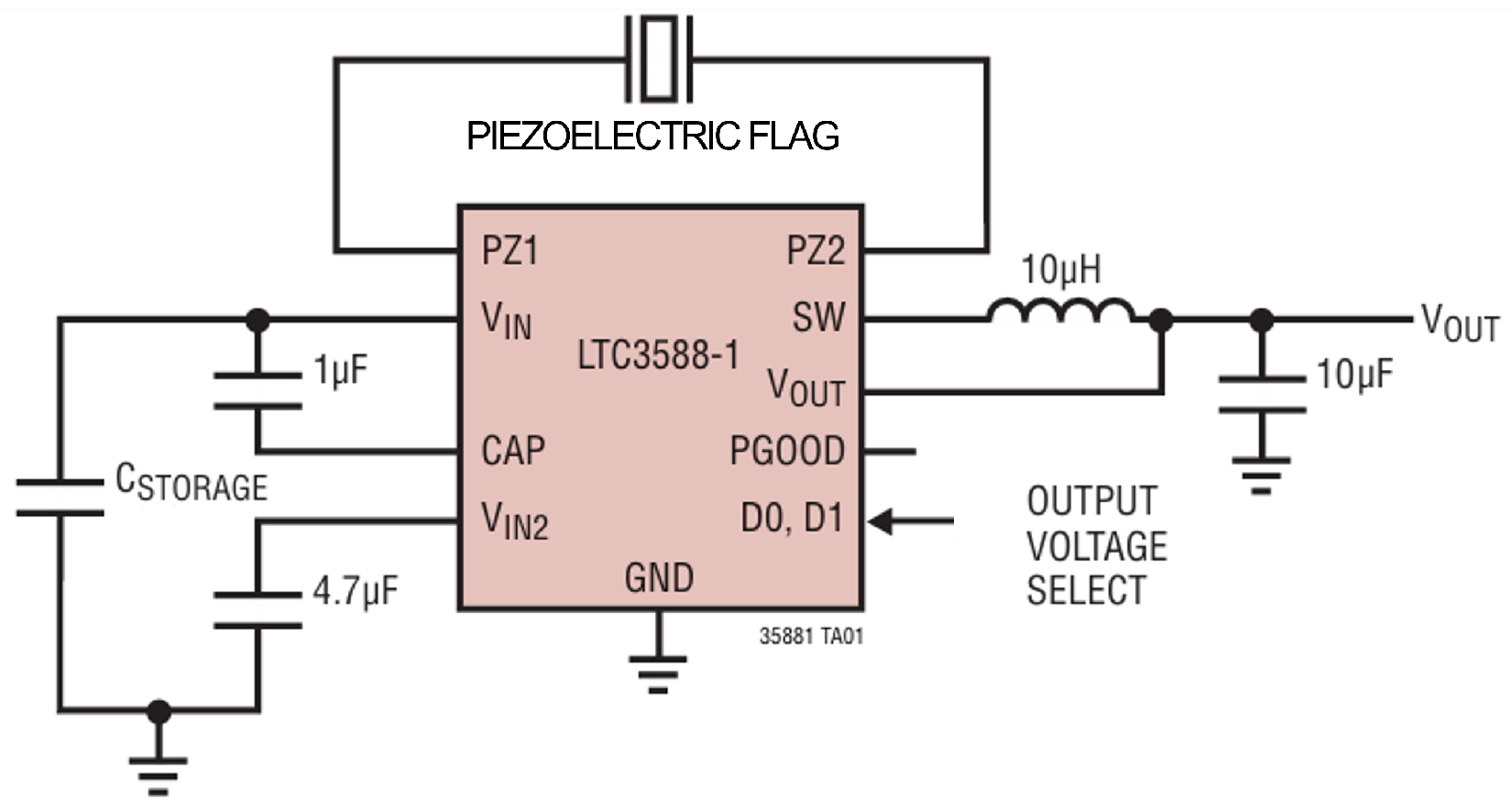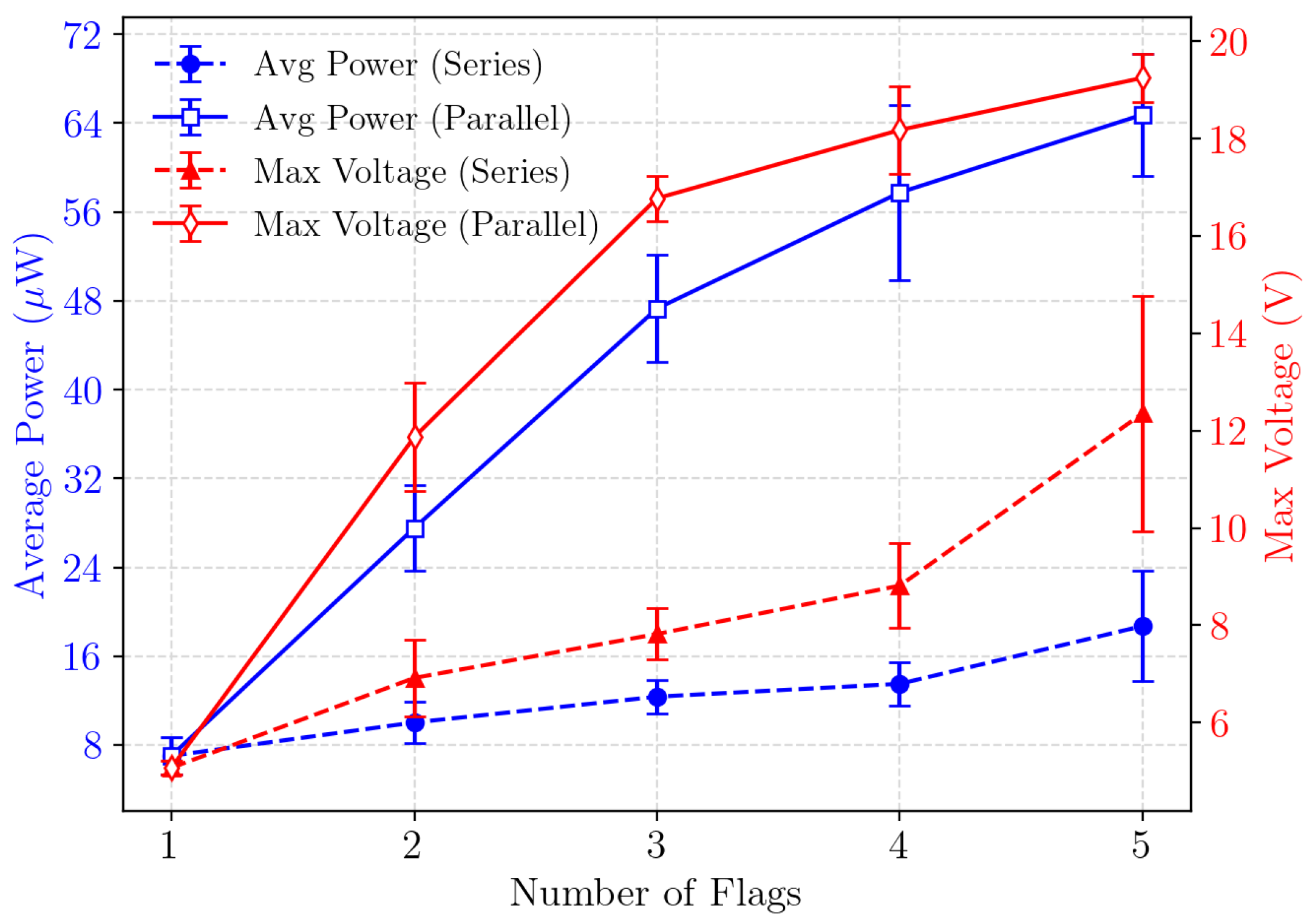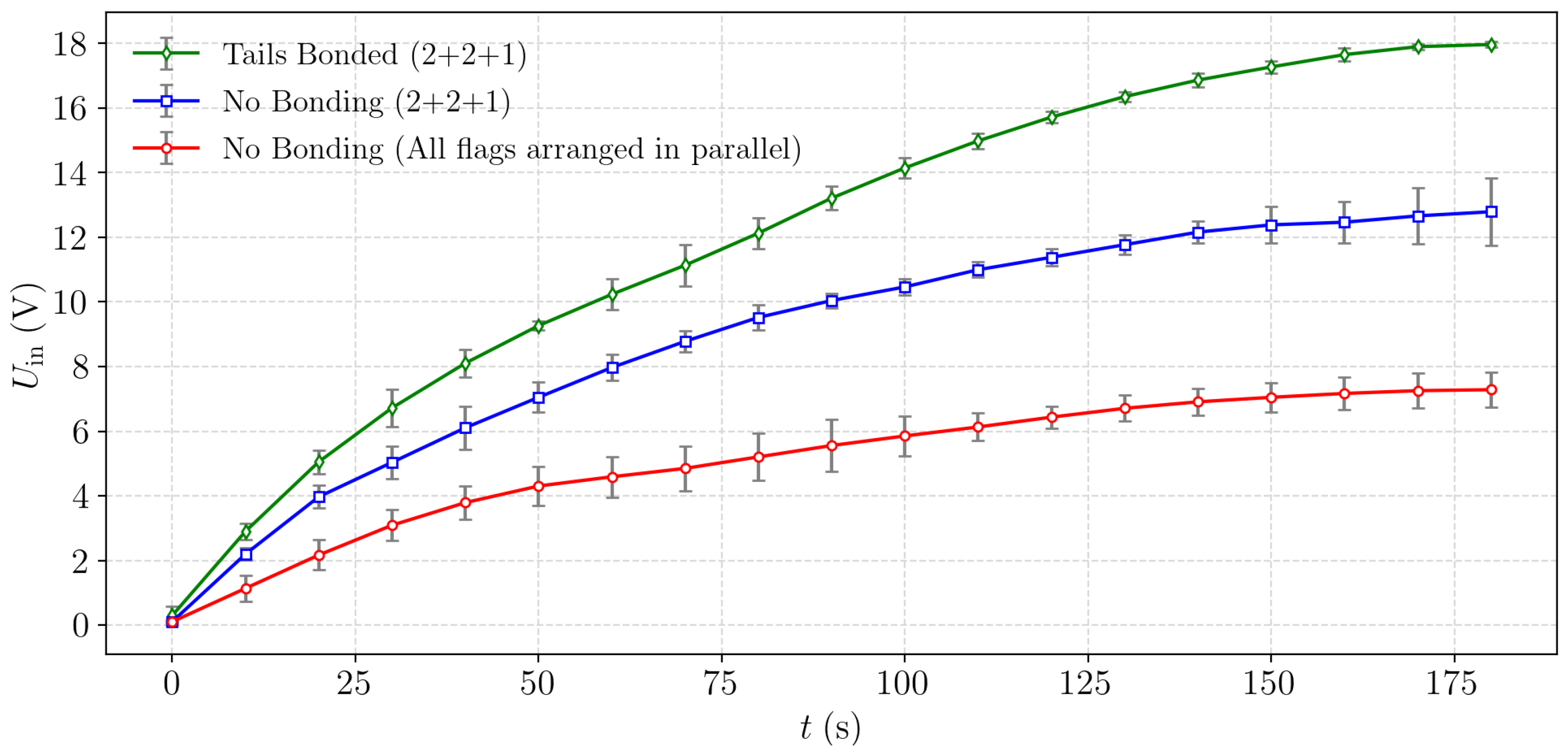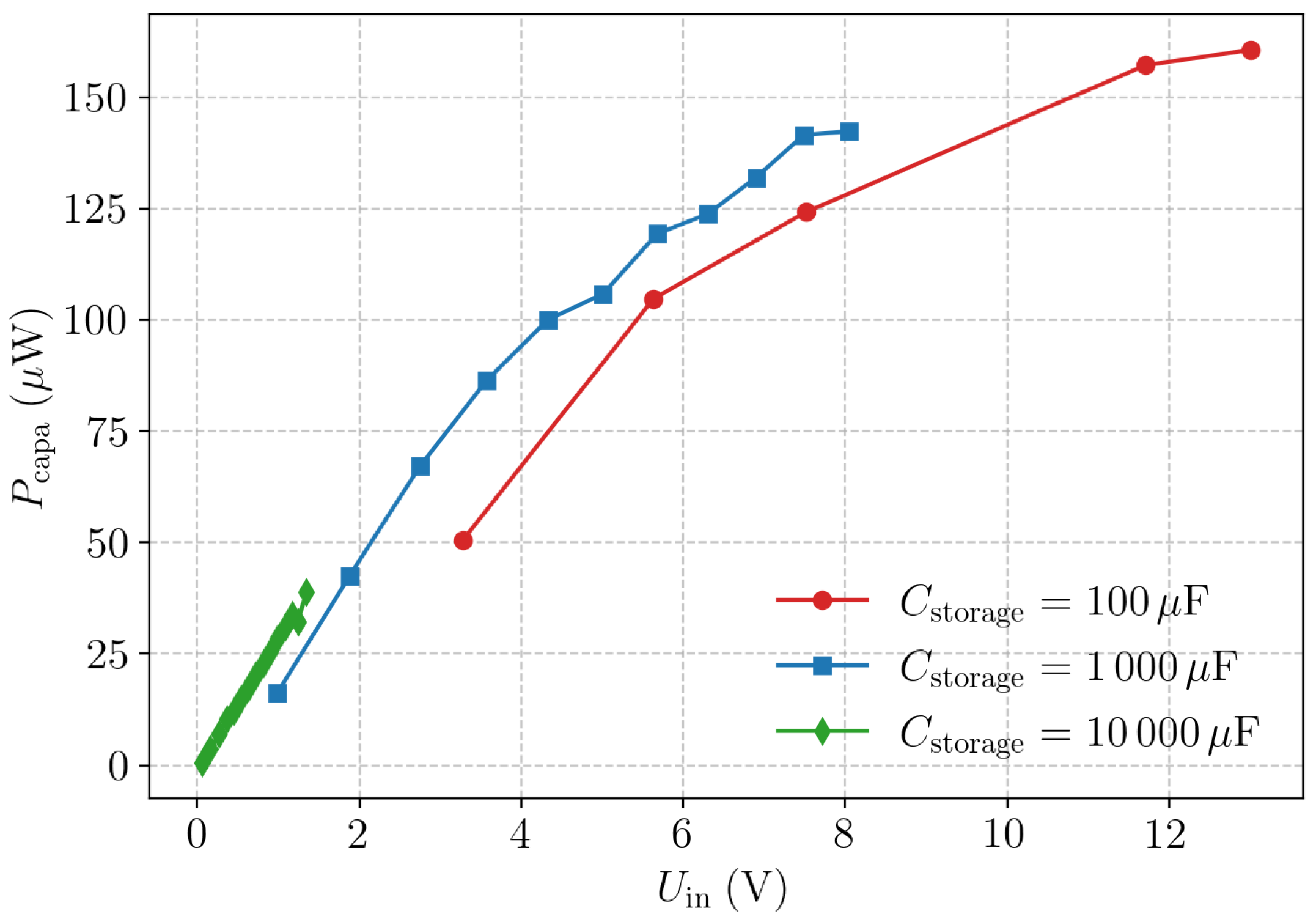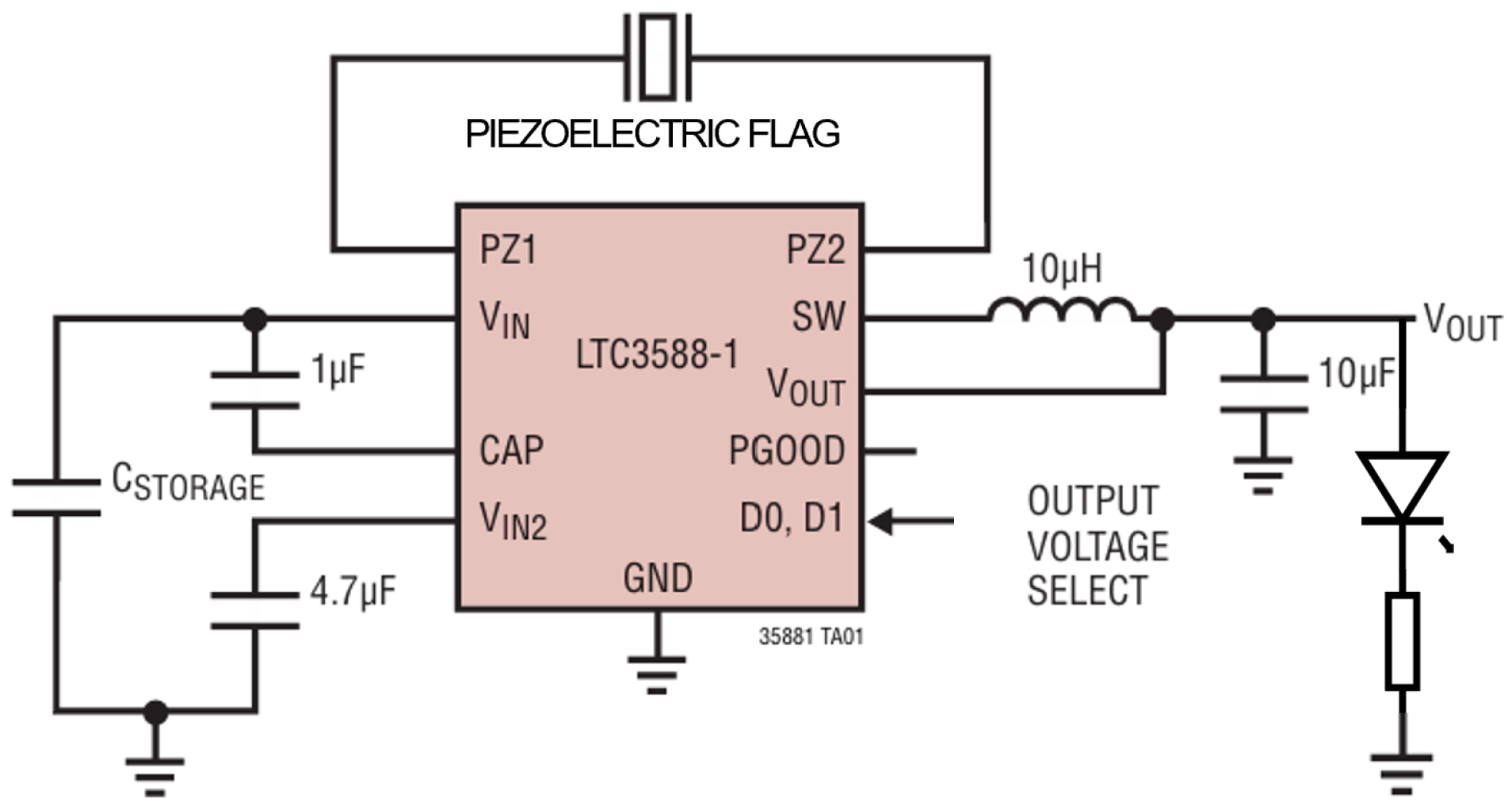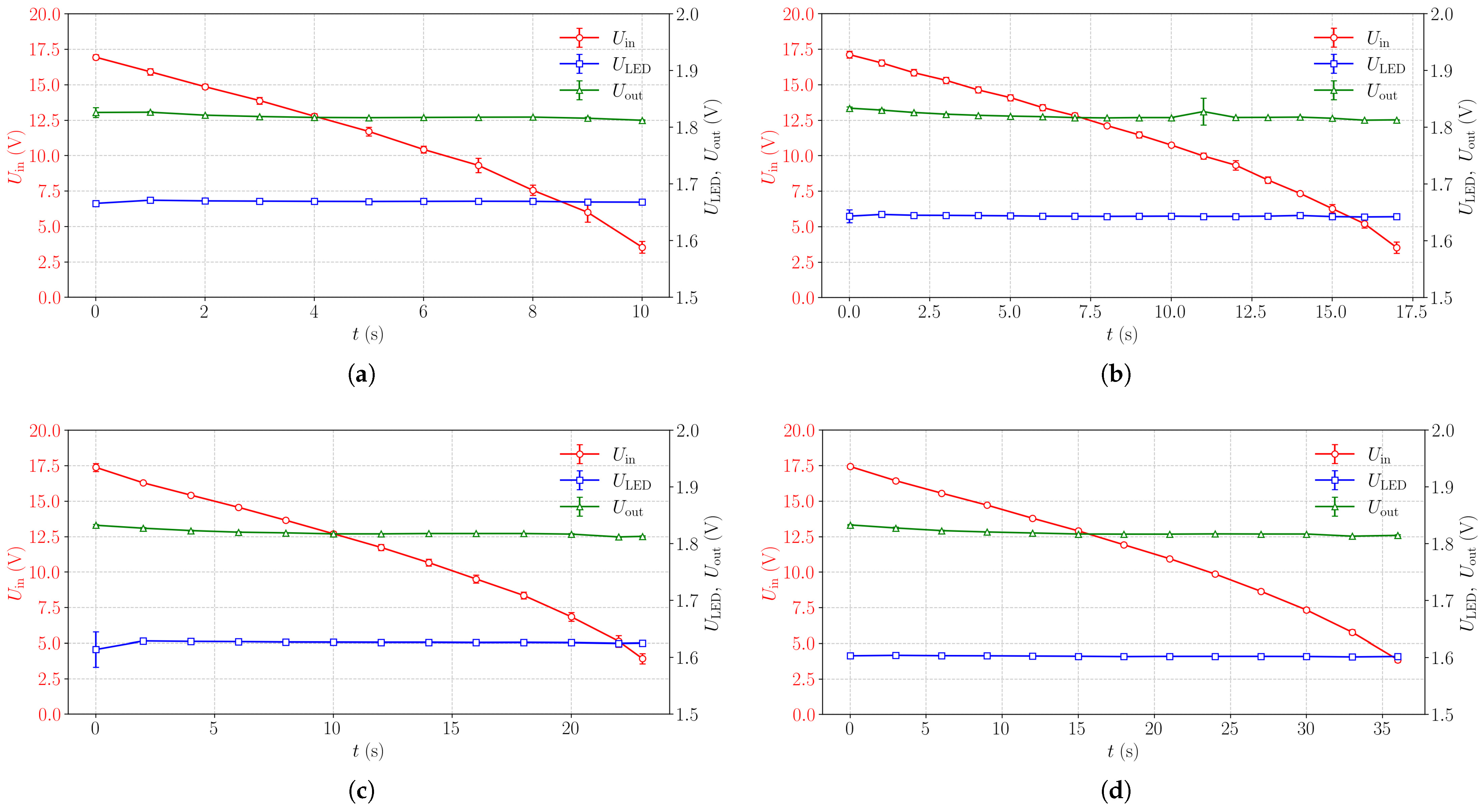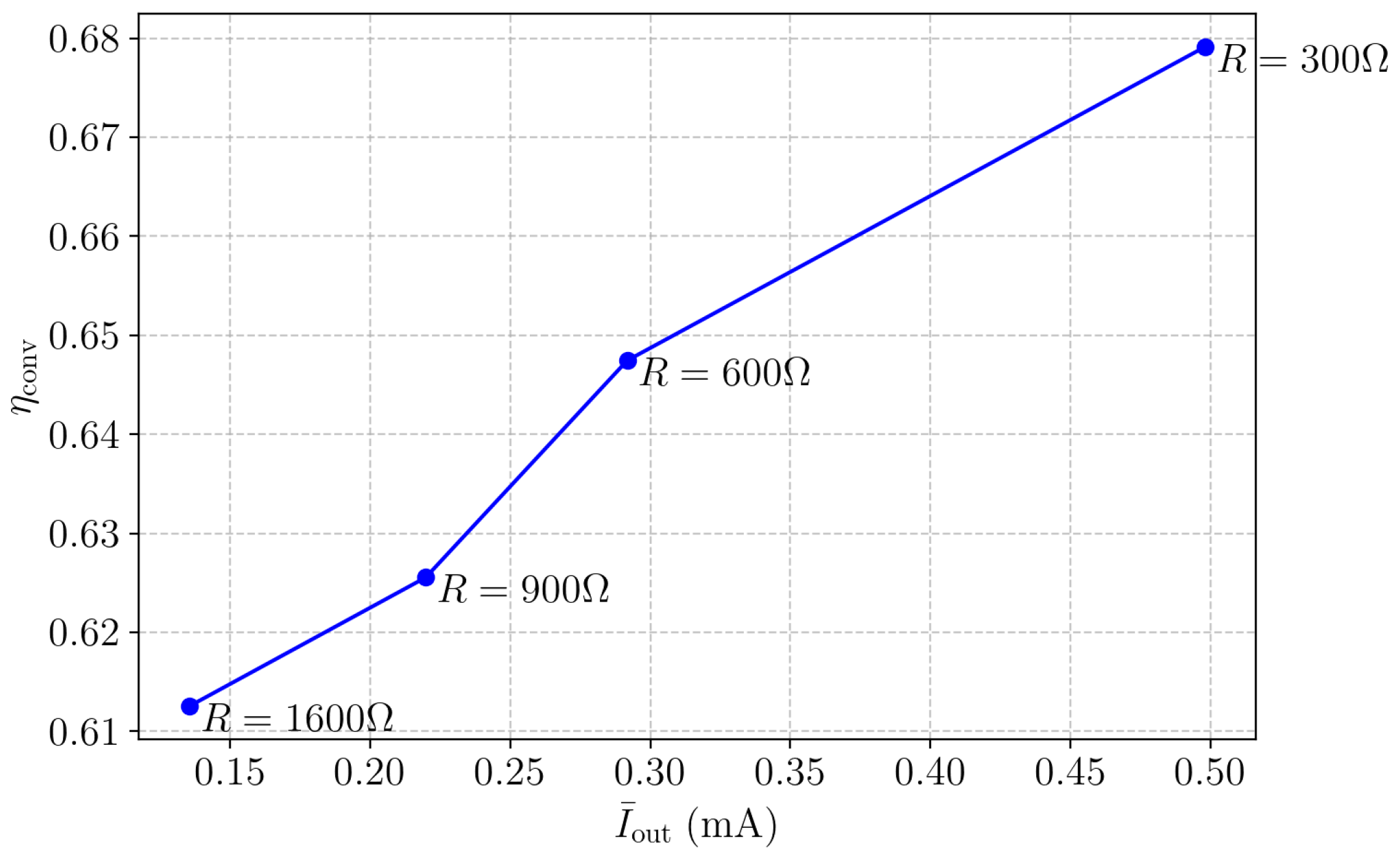3.1. Mechanical Structure Design
In this study, we have selected a flexible piezoelectric film sensor (model LDT4-028K/L, P/N 1-1002405-0; TE Connectivity Ltd., Berwyn, PA, USA) as the primary flag, as shown in
Figure 1. The sensor consists of a piezoelectric film element laminated with a polyester film. The polyester layer not only protects the internal piezoelectric element but also aids in the routing of the sensor leads, which can be twisted or bent to suit various constraints. The polyester film used in this study has a nominal thickness of 28
m. The overall sensor width is 22 mm (with an active piezoelectric region of 19 mm), and the sensor length is 171 mm (with an active piezoelectric region of 156 mm). The total flag thickness reaches 157
m, and its equivalent capacitance is 11 nF. This model offers the largest piezoelectric area in the LDT series, ensuring a larger wind-facing surface and higher oscillation amplitude during flutter or vortex-induced vibration (VIV), thereby promising enhanced electrical output.
Table 1 summarizes the key sensor parameters.
To enhance the output performance of the piezoelectric flag, the design employs an upstream bluff body. This bluff body generates a periodic Kármán vortex street that causes the flag to flutter more vigorously. Although different bluff body shapes and flow velocities can lead to variable excitation effects, our research focuses on the overall system design rather than optimizing the bluff body geometry.
For simplicity and versatility, we selected a cylindrical bluff body that is easily fabricated via 3D printing and provides sufficient internal space for system wiring. Specifically, a hollow cylinder with an outer diameter of 20 mm and a height of 150 mm is mounted on a rectangular base measuring 40 mm × 24 mm × 5 mm. Inside the cylinder is a 12 mm diameter wire-routing channel that connects to the exterior via a 4 mm wide inlet on the downstream side at a height of 110 mm above the base. On the upstream side, a 6.4 mm × 20 mm wire outlet is provided. The flag’s leads can be inserted through the inlet, routed upward via the internal channel, and then exit at the bottom through the outlet. This configuration leaves the gap between the bluff body and the flag largely unobstructed, allowing for parametric studies on their relative positioning. Additionally, by concealing the wiring, this design minimizes interference with the fluid flow and improves visual aesthetics—particularly when multiple flags are in use.
We adopted a puzzle interlocking slot on the cylinder’s base to streamline its integration with other system modules. This mechanism enables a quick swap or modification of the upstream bluff body without affecting the downstream flag. Researchers can easily test alternative bluff body geometries or dimensions by printing new variants and securing them with the interlocking interface, enhancing overall adaptability and maintenance efficiency.
Table 2 lists the key dimensions for the bluff body.
A separate downstream support structure is used to secure the flag. The support rod has a width of 2 mm, a length of 13 mm, and a height of 150 mm, matching the cylinder height. The rod’s slim profile was chosen to minimize its wind-facing area, thereby reducing interference with the downstream flow field. It is attached to a base with dimensions 40 mm × 80 mm × 5 mm. Triangular stiffeners, measuring 2 mm in width and 35 mm in height, are positioned on either side of the rod where it meets the base to maintain rigidity during large-amplitude oscillations.
Table 3 provides the parameters for the downstream support structure used to hold the flag.
The downstream base also features a puzzle interlocking tab that pairs with the cylinder’s puzzle interlocking slot, allowing easy reconfiguration. Thus, adjustments to the flag–cylinder distance or multiple-flag layouts can be made by switching to a different downstream support without needing to modify the entire test rig.
Figure 2 shows an illustration of the upstream cylindrical bluff body and the downstream support structure.
To secure the piezoelectric flag to the support rod, double-sided adhesive tape is employed, as shown in
Figure 3. This method provides a low-profile, uniform attachment that avoids introducing any additional geometric features near the flag. Consequently, the streamlined interface minimizes interference with the fluid flow, ensuring that vortex formation is predominantly influenced by the upstream bluff body and not by the attachment mechanism. This design choice supports a more accurate representation of the intended aerodynamic conditions and enhances the overall efficiency of the energy-harvesting device.
3.2. Circuit Design
The energy-harvesting system is built around the LTC3588-1 energy-harvesting IC, an ultra-low-power energy-harvesting solution that converts the high-impedance, low-frequency AC output of the piezoelectric transducer into a stable DC supply. This is achieved by combining an internal full-wave bridge rectifier with a high-efficiency buck converter, thereby eliminating the need for multiple external components. The LTC3588-1 energy-harvesting IC features an integrated protective shunt, a wide input voltage range, and selectable output levels (1.8 V, 2.5 V, 3.3 V, or 3.6 V), along with an extremely low quiescent current to enable long-term operation in remote or self-powered sensor applications.
Table 4 lists the main functions of several important pins of the LTC3588.
Key internal components are shown in
Figure 4 and their functions include the following:
Full-Wave Bridge Rectifier: Converts the alternating output from the piezo element into pulsating DC, storing the signal on a capacitor at the VIN pin. At currents around 10 A, the typical voltage drop is about 400 mV, while the bridge can carry up to 50 mA.
Protective Shunt Regulator: Clamps VIN at approximately 20 V to suppress high-voltage transients.
High-Efficiency Buck Converter: Steps down the accumulated voltage to a user-selectable DC output using a hysteretic control method. An internal PMOS ramps the inductor current up to roughly 260 mA before an NMOS discharges it, ensuring efficient energy transfer.
Undervoltage Lockout (UVLO): Minimizes quiescent current when VIN is below a threshold, allowing a weak source to charge the external capacitor without unnecessary losses.
The whole circuit design is shown in
Figure 5. An external capacitor is placed between the
VIN pin and ground to store the harvested energy. During the charging phase, the rectified DC voltage gradually increases until either the source’s maximum potential is reached or the protective shunt clamps the voltage. When powering a load, the buck converter steps down the capacitor voltage to a stable 1.8 V. For demonstration, a protection resistor and a 1.7 V, 1 mA LED (ParaLight L319EGWASS) are connected in series at the output
VOUT pin. By varying the capacitor sizes and series resistor values, the effect on charging behavior and discharge profiles can be systematically investigated. Additionally, two manual switches control the charging and discharging cycles: one between the capacitor and the
VIN (closed during charging) and another between the
VOUT and the resistor–LED load (closed to power the LED).
Multiple piezoelectric flags can be connected either in series or in parallel. In a series configuration, the voltages add up, which can help the LTC3588-1 energy-harvesting IC reach its startup threshold if a single flag’s output is insufficient. Conversely, a parallel configuration combines the current contributions at the same voltage level, which is beneficial if the individual flag voltage is already adequate but the total current is low. Comparative tests among single-flag, series multi-flag, and parallel multi-flag setups are performed to evaluate which configuration yields the best power output and conversion efficiency at identical flow speeds.
3.3. Experimental Design
A series of experiments were carried out to validate the proposed mechanical and circuit designs in a steady jet generated by a household hair dryer. The hair dryer outlet is annular, with an outer diameter of 55 mm and an inner diameter of 45 mm. The airflow is discharged through the annulus between these two radii. As demonstrated in the next subsection, this geometry modifies the near-field velocity distribution, whereas beyond the immediate vicinity of the nozzle, the combined stream behaves effectively as a single jet. The hair dryer is positioned such that its central axis is 8.5 cm above the laboratory table surface. Apart from this table, no other walls or obstacles lie within a 2 m radius, so the only unavoidable boundary is the tabletop itself. Because the jet issues 8.5 cm from the table, any near-wall influence on the flow is expected to be minimal.
For the experiments, the cylinder bluff body was placed immediately adjacent to the hair dryer’s annular outlet without a gap, and the piezoelectric flags were mounted directly downstream of the cylinder to flutter in the induced airflow. The flow velocity along the flag’s axial direction was measured at discrete locations using an anemometer (DELI DL333203). Ten independent recordings were taken at each location. In the Results Section, we report the mean axial velocity, , with error bars representing , where is the standard deviation over the ten measurements.
Table 5 lists the directly measured electrical parameters, which are recorded in real time using high-impedance multimeters or an oscilloscope. Multimeters are preferred over the oscilloscope in most cases because their internal resistance of 10 M
is significantly higher than the oscilloscope’s 1 M
, thereby reducing measurement-induced loading in this ultra-low-power system.
These measured voltages () form the basis for subsequent calculations. The capacitor voltage will be monitored to characterize the charging behavior under different capacitor capacities and flag configurations.
All DC voltages were logged with a digital multimeter (TOPLIA TM103, input impedance 10 M) connected through low-capacitance probes. For the slowly varying capacitor voltage , the 20 V DC range (resolution 10 mV) was used; for the regulated output and the LED forward voltage , the 2000 mV DC range (resolution 1 mV) was selected. The AC peak-to-peak voltage across the series resistor, , was captured with a digital storage oscilloscope (Tektronix TDS1002B, input impedance 1 M).
Each operating point was repeated five times; in
Section 4, each voltage is reported as the sample mean,
U, with error bars of
. The instrumentation and corresponding measurement ranges and resolutions are summarized in
Table 6.
The energy-harvesting process is divided into three stages. In the first stage (piezoelectric conversion), the kinetic energy of the fluid is converted into electrical energy by means of the vibrating piezoelectric flag. The flag’s output power,
, is determined by placing a resistor
R in series with the piezoelectric element, varying
R, and measuring the resulting voltage. The piezoelectric conversion efficiency
is then given by
In the second stage (rectification), the AC output from the piezoelectric element is rectified and stored in a capacitor. The rectification efficiency
quantifies the power transferred to the capacitor relative to that produced by the piezoelectric flag:
where
is computed by monitoring the capacitor voltage over time and calculating both the stored energy and the instantaneous power.
The third stage (voltage conversion) consists of discharging the capacitor through a the buck converter to deliver power to the load. The voltage-conversion efficiency
is defined as
where
is the energy delivered to the load, and
is the energy drawn from the charged capacitor.
These three stages constitute the complete pathway of energy transfer from the fluid flow to the final load.
The total system efficiency,
, is obtained by combining these stage-wise efficiencies:
Table 7 summarizes the relevant parameters and their associated formulas.
Charging and discharging profiles are then analyzed to identify the most favorable design parameters. Various configurations, such as series or parallel flag connections, different spatial layouts (e.g., overlapping versus separately spaced flags), and a range of storage capacitor sizes or series resistor values, are evaluated. By examining their impact on charging rate, stored energy, and final power delivery, a comprehensive framework for optimizing each step of the energy-harvesting process is established.
